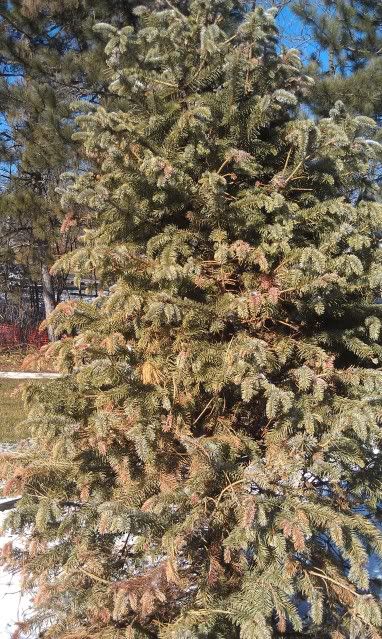Tucker943
Bamboo Plantation Owner
I need help. I planted 3 blue spruce in a bed for a customer last spring. Trees have always thrived in this location. We removed a few white pines, ground the stumps, and replaced them with blue spruce. 2 of the spruce are thriving, this one is browning out and tips are curling back in. They are about 12 feet apart....... ?




